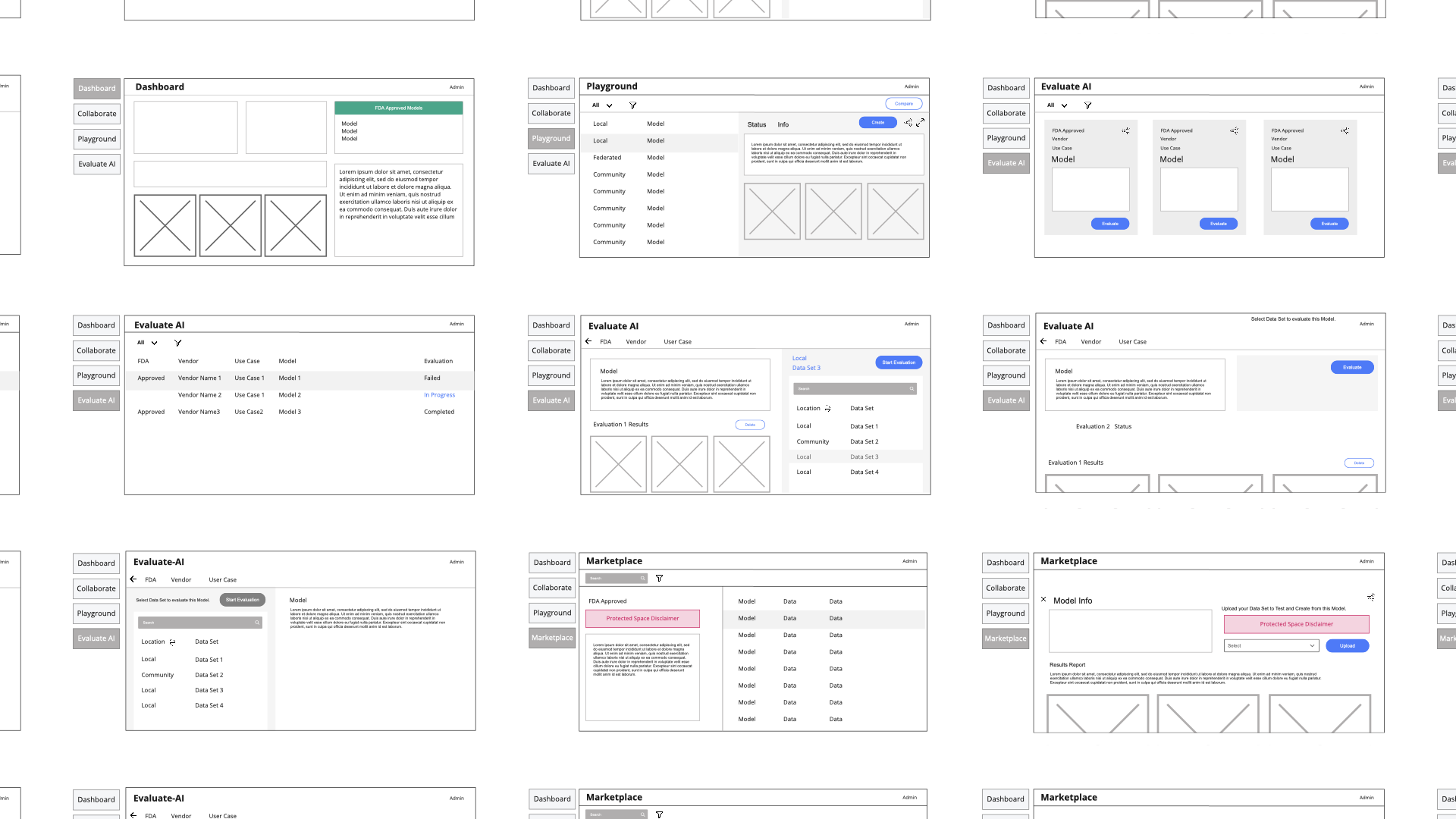
ACR AI-LAB
A first-of-it's-kind data science toolkit designed by the American College of Radiology's Data Science Institute to Democratize AI by empowering radiologists to develop AI algorithms to support the clinical needs and expand the adoption of AI technology for radiologists, facilities, and the health care community around the country.
PROJECT
Product Design
ROLE
UI/UX Lead
Information Architecture
Front-End Development Assist
Motion Graphics Art Direction
Marketing Visual Design
TEAM
PO, PM, BA, Data Scientists, Engineers, Back-end Developers, Front-end Developers
Challenges
Limited development of AI due to lack of computer science expertise in health care institutions to build and customize AI models for investigative purposes.
Lack of diverse array of clinical data being shared for algorithm training due to patient privacy concerns.
The manual process of writing codes.
Lack of awareness and understanding of AI within the radiology community.
Personas
Objectives
Develop a cloud version of the platform to introduce the concept, educate, and provide a simple step-by-step, hands-on toolkit that the participants can rapidly build, test, and customize AI models and experience the entire AI development life-cycle.
Promote the initiative during the ACR annual meeting conference by demonstration and contest participation.
Develop an on-premise version of the platform for use at their own facilities, using their own data, to meet their own clinical needs.

Information Architecture
The cloud version, although it was launched successfully, needed structural reexamination. So I took it back to the drawing board and audited content and structure.

Strategy
Created visual animated presentation to show the current state and strategy to solve the problem.
With client approval, new wires were created.

UI Design
Darkroom Annotation
Darkroom UI implemented for image-related functionalities to offer the radiologists a seamless and familiar experience as their facility darkroom tools.
Create
Data drive multi-select user dropdowns that changed dynamically to suit the needs of AI configuration, due to the dynamic nature of pre-population, a multistep process was designed to improve performance.
Evaluate Card View
With only few models available, card view has been applied as a start and FDA approved models have special indication.
Evaluate Detail
Second column to find dataset to evaluate and each evaluation has progress indicator and expandable view for overview.
Mobile App
Progressive mobile app designed for cloud version.
Takeaways
This was a challenging project with an aggressive deadline and unpredictable expectations, but the constraints fostered creativity and strengthened the team dynamic. Above all, it was rewarding to be part of a technological evolution that brought significant awareness and a game-changing impact to the radiology field.
I expanded my design skills by working on complex data visualizations, darkroom imaging tools, and innovative AI model interfaces.
Collaborating closely with Data Scientists to turn concepts into reality reinforced the importance of context-centric design and highlighted how much more this product could improve with additional meaningful data.
If I could change one thing, I would incorporate a technical screening test for front-end contractors during the interview process to boost productivity. People are the greatest asset, and assembling the right team for the right job is key to a successful project.













